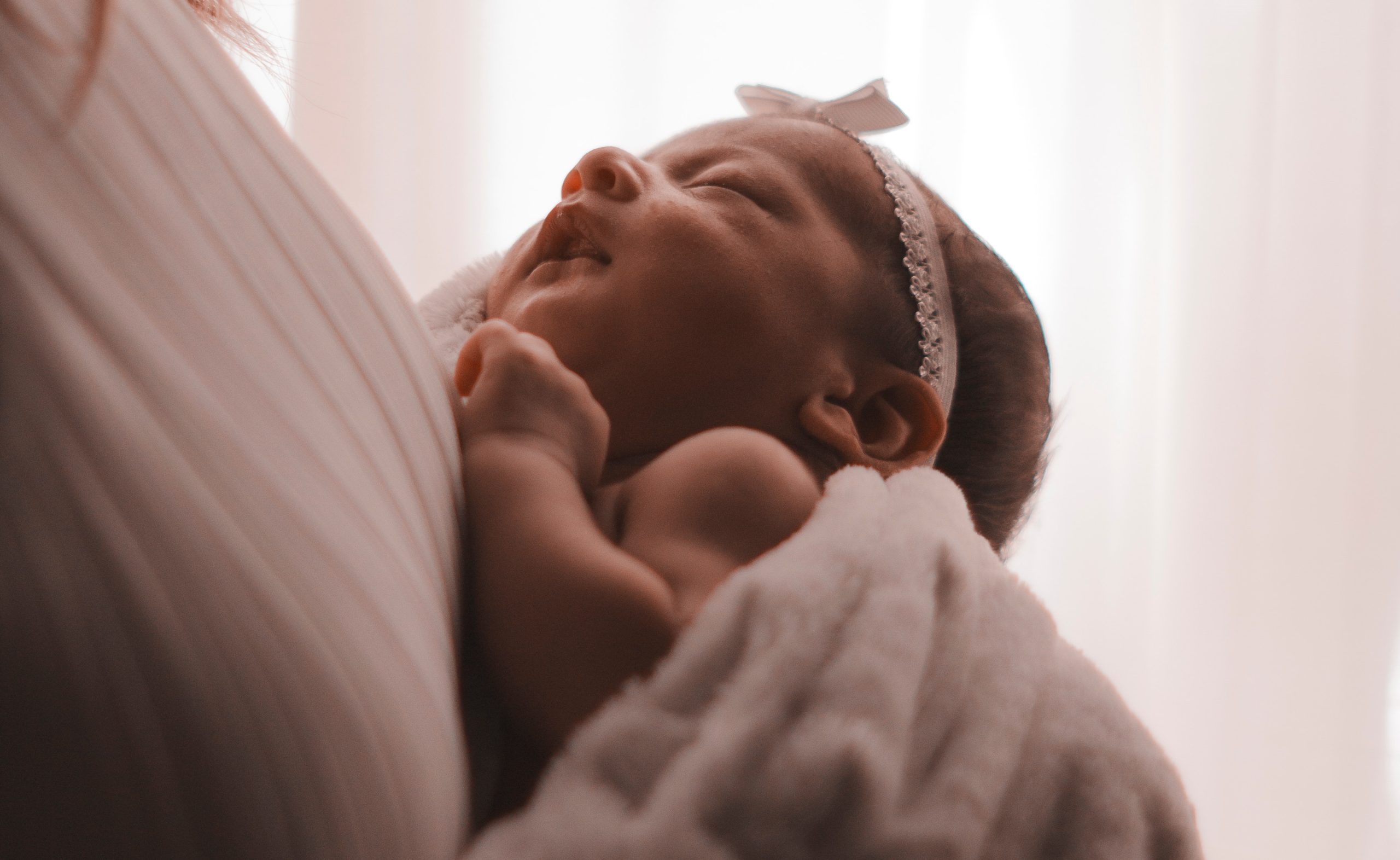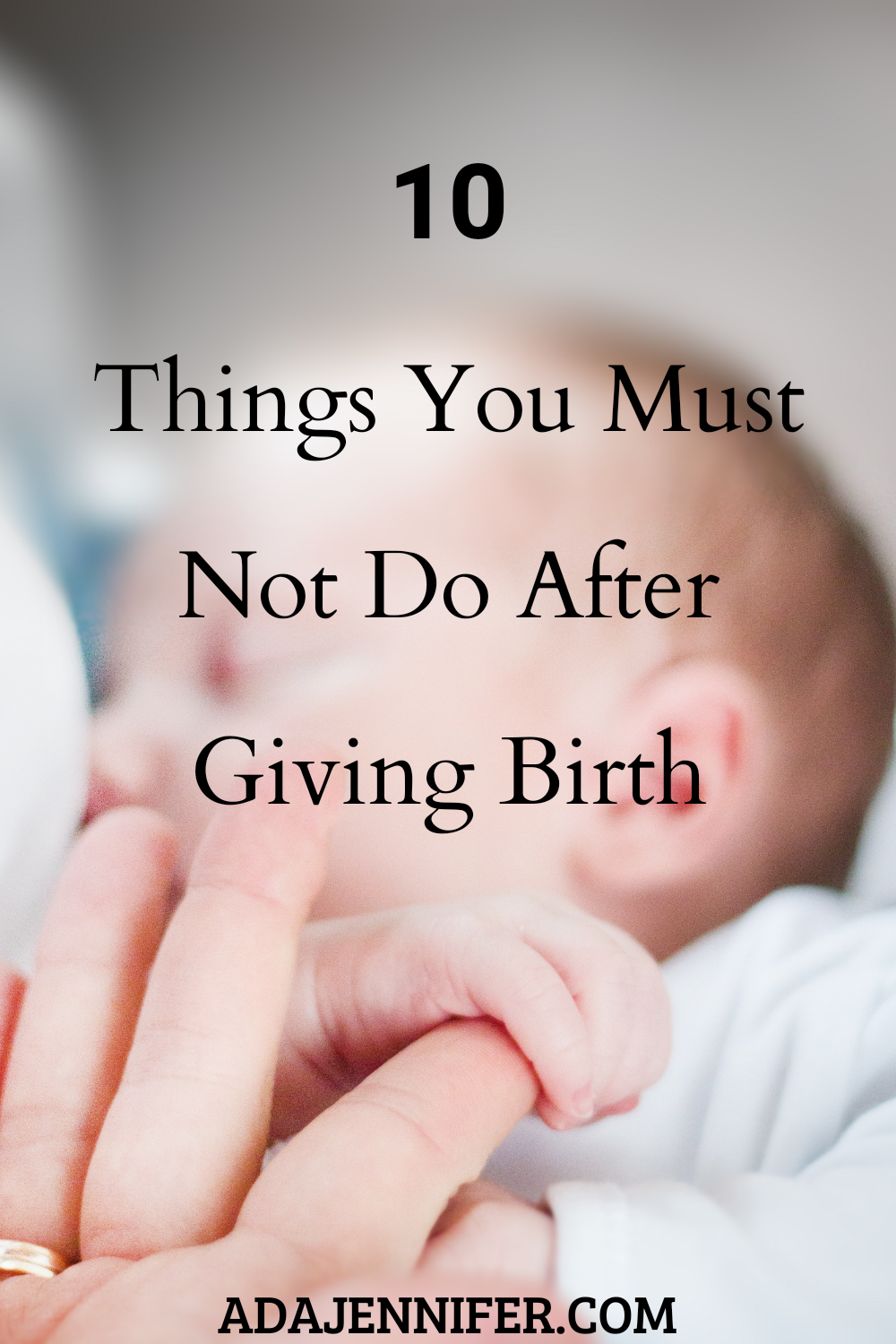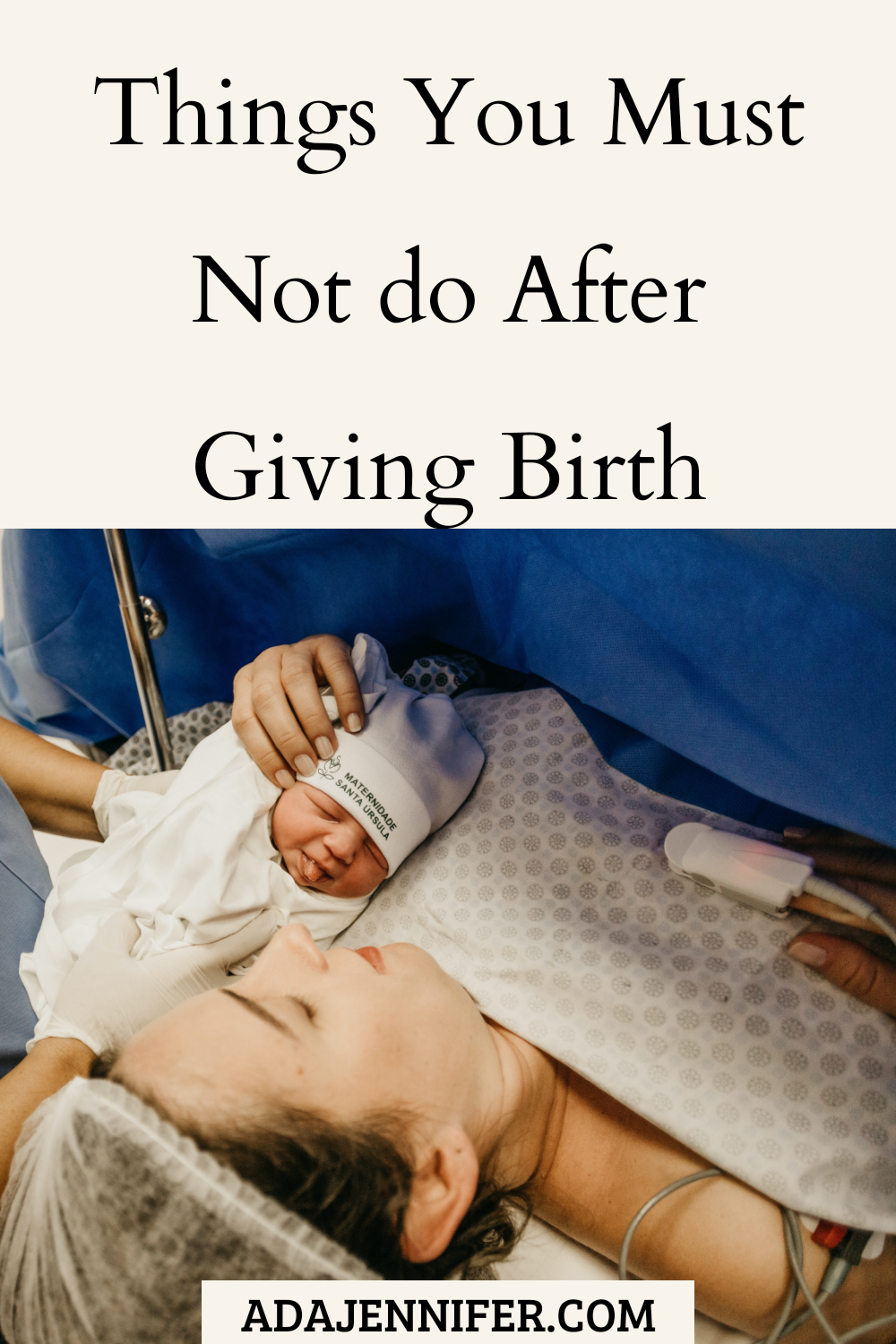10 Things You Must Not Do After Giving Birth

A healthy pregnancy will result in the birth of a healthy baby, details of this are in my blog post titled How To Have A Healthy And Belly Only Pregnancy. But After the delivery of a healthy baby, what next? The period after delivery is a sensitive time for new mothers, that is why it is good for mothers to know before delivery what not to do after giving birth.
The question of what not to do after giving birth can be answered by health practitioners but beyond this, it is important you know for yourself the many consequences that can arise when you have no prior knowledge of what not to do after giving birth.
That is why in this post, I will be discussing postpartum, postpartum recovery kit, postpartum recovery timeline, restrictions after giving birth and answering questions like how long should you rest after giving birth ( period of recovery after normal delivery), what the period of bed rest after normal delivery is, after giving birth when your period starts, and the consequence of not resting after giving birth.
All the aforementioned areas are encompassed in the big question of what not to do after giving birth. This goes on to show how this question cannot be downplayed.

How Long Should You Rest After Giving Birth ( Recovery After Normal Delivery)
After giving birth, it takes 6weeks for the body to return to its pre-pregnancy state. This period is referred to as the puerperium. Because of the time, it will take your body to recover after delivery, you should take care of yourself even as you try to focus on meeting the needs of your newborn.
During this time, you should eat and drink well, take a break from strenuous activities, and just rest, bearing in mind that not resting after giving birth can cause you to breakdown.
Restrictions After Giving Birth

During the period after delivery, it is best for new mothers to ensure they get adequate rest or sleep, drink, and eat well. It is also important that meals are not skipped in an attempt to lose weight, because your body needs to heal and breastmilk has to be produced for your newborn.
Postpartum Recovery Timeline
Postpartum is the period after delivery. A lot of women are not adequately ready for this period basically because they focus on the birth and care of their baby. But giving a little attention to learning about post-delivery healing can help mothers go through this phase smoothly. To help you properly understand what to expect after delivery, here is a postpartum recovery timeline.
Week 1 Postpartum
The first week postpartum is the toughest in terms of body adjustment and recovery. You will be very conscious of the stitches after birth, and will likely feel the stitches after birth stinging. If you had a vaginal delivery, you may feel much pain in that area, depending on if and how many tears you incurred.
Also during this time, the uterus starts contracting back to it’s before pregnancy size so you should be sure to expect uterine cramping, and bleeding from the vagina is normal during this time. This is usually the case whether you delivered by C-section or vaginally, so expect to wear pads during this period. You should however avoid using tampons because they can cause infection.
Also, if you had a C-section, moving around during this time will be difficult and you will feel pain in the incision area. Furthermore, fluctuations in hormonal level and the feeling of exhaustion and mood changes are normal for mothers who delivered vaginally and those who delivered through C-section during this time.
Week 2 Postpartum
Vagina bleeding starts to reduce for some women while for others it can last for 4 to 6weeks. This is within the normal and is nothing to worry about. If you had an episiotomy or vagina tear, vagina itchiness sets in during this time, as the area of the vagina starts to heal.
Also during this period, some women experience night sweats which are a result of hormonal changes plus the fact that your body needs to let go of excess pregnancy fluids. This experience though very uncomfortable lasts for a few days or weeks.
Week 6 Postpartum
In the case of a normal vagina delivery, the uterus returns to it’s before pregnancy state, vagina bleeding stops, and you can now resume your regular exercises and lovemaking activity( if you feel up to it). The same goes for if the delivery was through C-section, although in this case you will be required to wait a while before engaging in things like exercise and other strenuous activities.
Also, the scar of the C-section might still be itchy at this time and it is normal for new moms to feel tired during this period. Postpartum blues are also likely to occur and should be reported to your doctor when noticed.
Week 6 to 6 Months Postpartum
During this time, you will likely have your postpartum checkup with your health practitioner who will access your overall health state and tell you if it is OK to exercise and have intercourse. Time spent with your physician is a good opportunity to share your concerns or ask questions.
This period is however marked by significant hair loss which results from the leveling out of hormones, also during this period many women have difficulty controlling their bladder due to the stretching of the pelvic floor muscles during pregnancy and delivery. Episiotomy or tearing also contribute to this condition. If this problem persists consult your doctor, who will direct you on what to do.
Postpartum Recovery Kit
These are the things you will need during pregnancy to have a smooth postpartum recovery.
1. Maxi Pads

You will need these during the period of bleeding.
2. Sitz Bath
This tub is used in the case of a tear or episiotomy to aid the healing process.
3. Witch Hazel Pads
This is used with ice packs to relieve pain in the public region and help with postpartum hemorrhoids
4. Squirt Or Peri Bottle
This is used to rinse off your perineal before or after urinating.
5. Nursing Pads
This is used to keep leaky nipples from spilling breast milk.
6. Lidocaine Spray
This helps to relieve the pain of postpartum hemorrhoids
7. Cotton Underpants
Allows flow of air to the vagina, hence aiding the healing process
8. Postpartum Recovery Belt
It helps the belly to recover its normal shape after delivery.
9. Pain Relieve Medications

They help relieve pain or aches in the body
10. Heating Pad
It helps to relieve you of the pains in your breasts.
11. Lanolin
This cream helps to prevent and treat cracked nipples.
Now that you know the things to acquire for postpartum, it is time to answer some important questions.
After Birth When Does Your Period Start?
It takes a couple of months for your period to resume after delivery. This time varies from one person to the other. Typically breastfeeding tends to delay the resumption of the period. Exclusive breastfeeding offers natural contraception as the process inhibits menstruation.
What Does Yellow Mucus Discharge Postpartum Mean?
After childbirth, a yellow mucus discharge is not usual and may necessitate a visit to your doctor’s office.
What Do Smelly Discharge 3 Months After Giving Birth Indicate?
This is an indication of an ongoing infective process. It is advisable to see your doctor for a proper examination.
Period of Bed Rest After Normal Delivery
After normal delivery, it is necessary to have bed rest for a couple of hours except if there are complications.
For you
Thank you for reading this post to the end, I hope it has been insightful and has answered your many questions about postpartum.
Pin For Later

